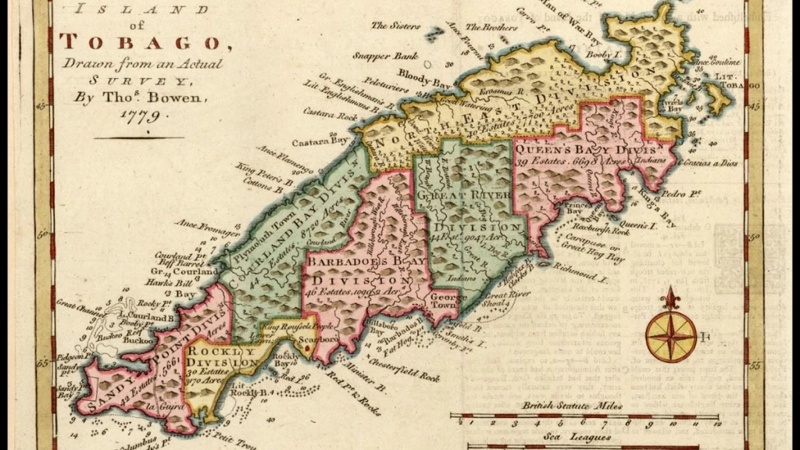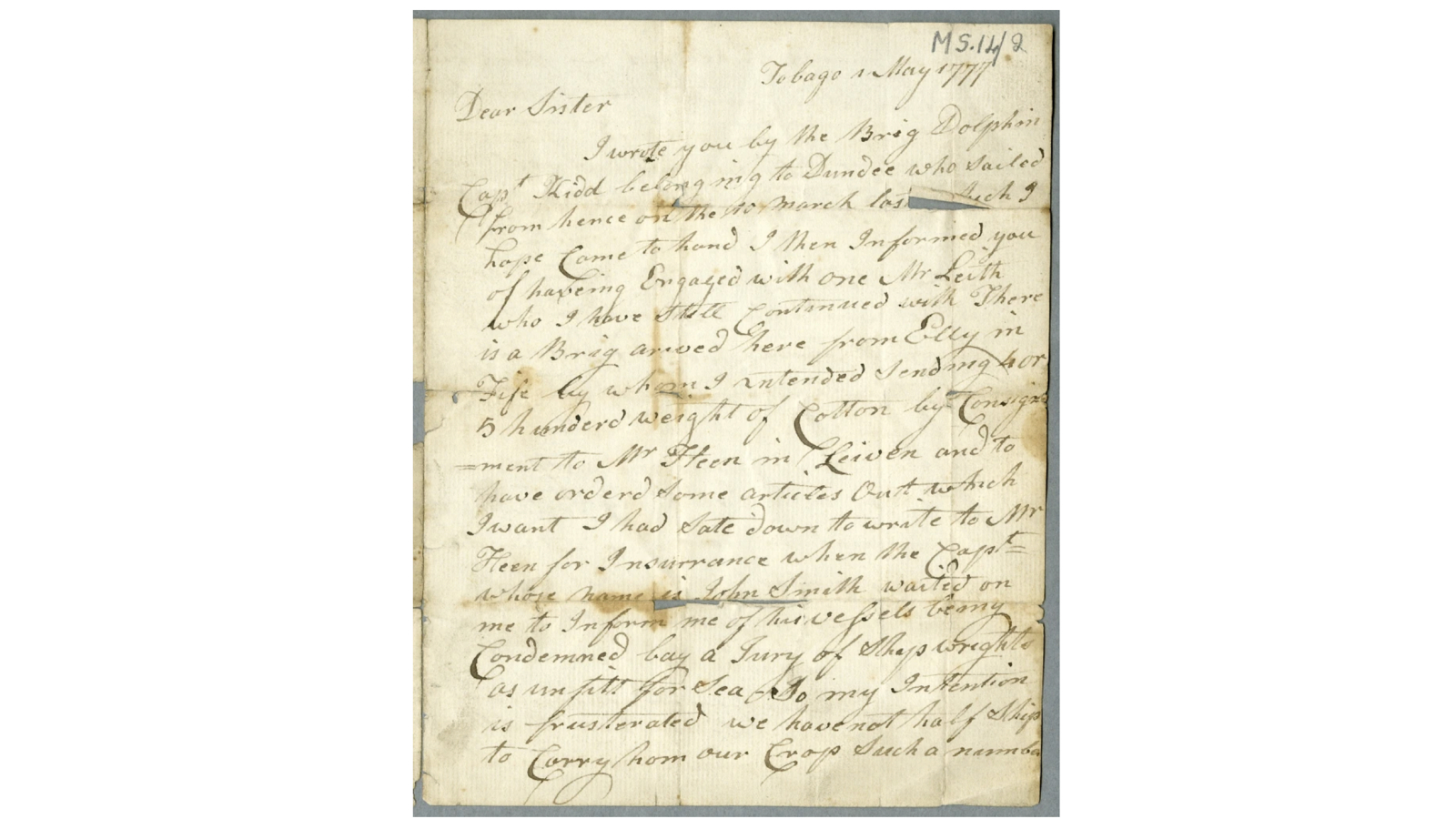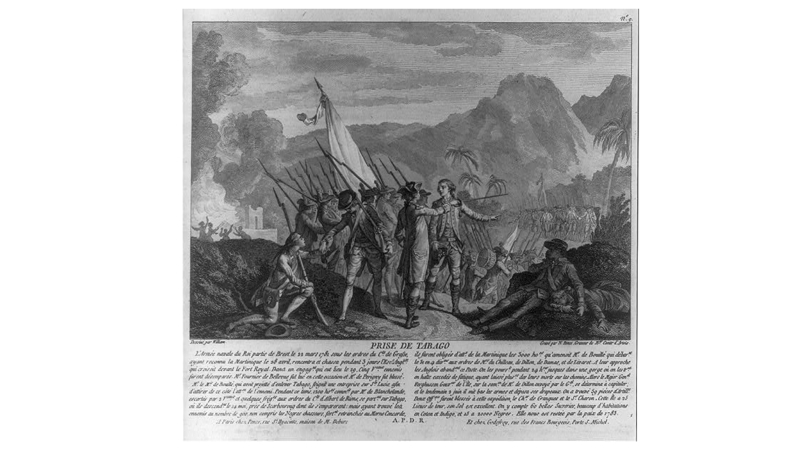Letters from Tobago

Map of the island of Tobago, 1779
1st July 2020
In 1776, John Foreman set sail from Greenock to buy cotton in Tobago to send back to Scotland. He was a merchant born in Scoonie, Fife, in 1740. Three letters written by him were donated to the Mitchell Library in 1934. These give an insight into Scottish trade with the West Indies at that time.
On 28 November 1776, the day of his departure from Greenock, he wrote to his mother, Isabel Blyth, with good wishes, assuring her that they were ‘well armed’ and ‘have nothing to apprehend from the Priveteers’ (MS 14 The Mitchell Library).

More news of Foreman arrived in May 1777, when he wrote to his sister, Ann, to inform her of the difficulties of shipping ‘4 or 5 hundred weight of Cotton’ to Scotland, which included the quality of the ships available and the scarcity of space on board. He was also anxious for Ann to pass on his regards to many people, and told her that ‘nothing in the world would make me half so unhappy as to break my faith to any individual in your place’. This would suggest that John had some sort of business agreement with her.
The fact that Foreman was finding it difficult to ship his cotton may have been due to the risks of trading in the Caribbean, which was beset by attacks from French privateers. The newspapers regularly reported on ships and cargoes which were apprehended. For example, the General Evening Post reported on 29 May 1777:
"The pirates out of Martinico are very numerous and daring, at which we are not little alarmed. About 20 days ago, they took a sloop belonging to this island, close along the shore of Tobago, where she was going with 60 new negroes, belonging to the planters there, all which, together with the sloop and sailor negroes, were publicly sold at Martinico. The negroes, that were bought out of the yards here at 39l and 40l sterling each, were there sold at from 20l to 25 l sterling each."
The London Chronicle of 3 June 1777 confirmed that ‘It is now become customary as soon as a man hears that his vessel is taken, to go directly to Martinico and buy as much as he can of his own property in again, as things are sold pretty cheap for cash; they are very expeditious with their sales, for they neither wait for condemnation nor any other form.’ A ‘gentleman’, writing in the Morning Chronicle and London Advertiser of 31 May 1777 saw political treachery in these acts:
"The French enjoy all the advantages of a war, without any of the inconveniences; prizes are brought in here every day by privateers, who call themselves Americans, but which in reality are French property, manned by French, Spaniards &c. Guineamen are their principal objects, which they too frequently fall in with. Nothing but war can stop their iniquitous proceedings."

The invasion of Tobago by the French in 1781
War was forthcoming, and in 1781, the island was captured by France. From these newspaper articles, we can build a picture of the type of men who were sailing these ships. They had a strong sense of injustice around the fact that their property has been stolen by others. In this instance the ‘property’ was 60 human beings, who are sold on at a reduced price in the market in Martinico. Many of these enslaved people, and others like them, were forced to plant, work and pick this cotton on the island of Tobago. Eventually some of this cotton would make its way to Scotland through the efforts of merchants such as John Foreman.
Clare Thompson,
Librarian, The Mitchell Library
